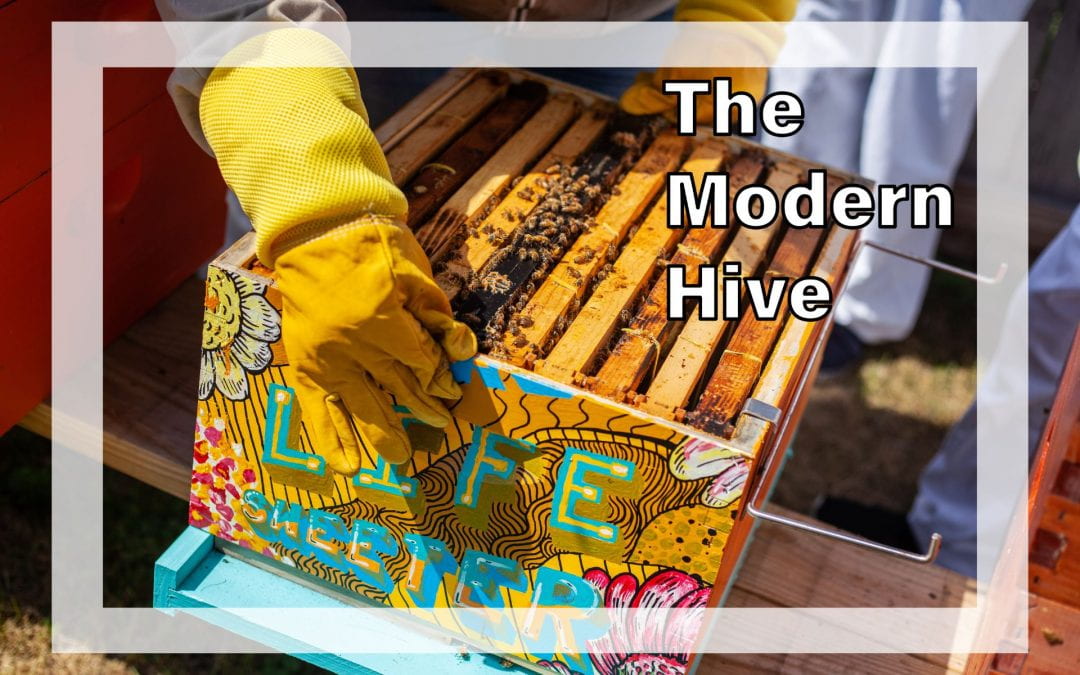The Beehive is a manmade structure made to house Honey Bees for several beneficial purposes: honey, pollination of crops, CCD prevention, and apitherapy treatments. In America, honey bees may be moved via truck or shipment to different areas for pollination purposes, often for a fee. Farmers can also rent hives to pollinate their crops. Hives have been made for many thousands of years, and the hives themselves varied greatly from location to location. Traditional Hives only provided an area for the bees to make a home in. These are also known as fixed-frame hives, nowadays beekeepers use movable-frame hives so that the colony is not destroyed by harvesting the honey. So let’s take a look at what’s inside a hive!
The internal structure of the Beehive is fairly regular among the different models available. There is a 2-part lid system, followed by the Super, which contains the harvestable honey. The Super’s construction may vary by model, but most are coated in a thin layer of wax to promote cell production. Descending from the Super is the Queen Excluder, which makes sure that the Queen cannot access the Supercells, and convert them to brood cells that contain larva. Moving from the Queen Excluder is what is referred to as either the “Deep,” “Hive Body,” or “Brood Box.”
The “Deep” contains the Queen and the brood of bees that will hatch, along with some honey reserves for the hive, this will be eaten in winter to maintain the appropriate hive temperature. The Queen and family typically reside within the middle of the “Deep” with honey reserves being towards the outside of the box. The “Deep” also contains the exit for the bees, which is usually sized so that only insects the same size as a Honey Bee can enter or exit.
Do you or someone you know keep bees? We want to hear your story! Pace University’s Pace Docs crew is in the process of producing a documentary about Urban Beekeeping, the latest in a series of award-winning environmentally and culturally relevant documentaries from our department. Contact us at paceudocs@gmail.com. And follow us on Instagram, Facebook, Twitter, and Tik Tok for more content!

